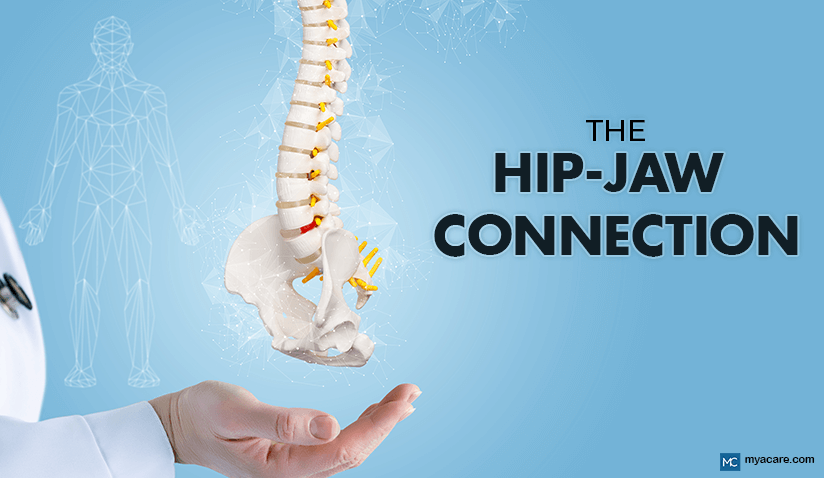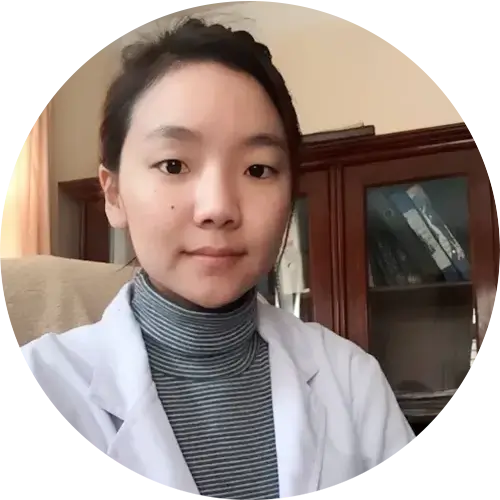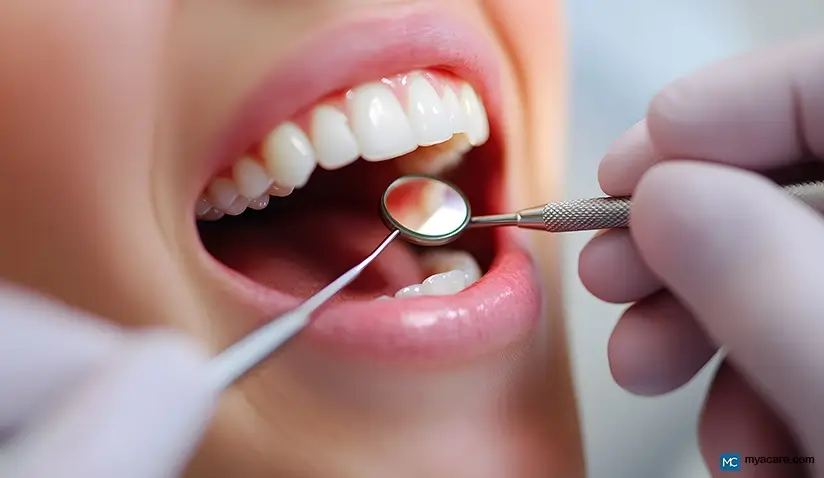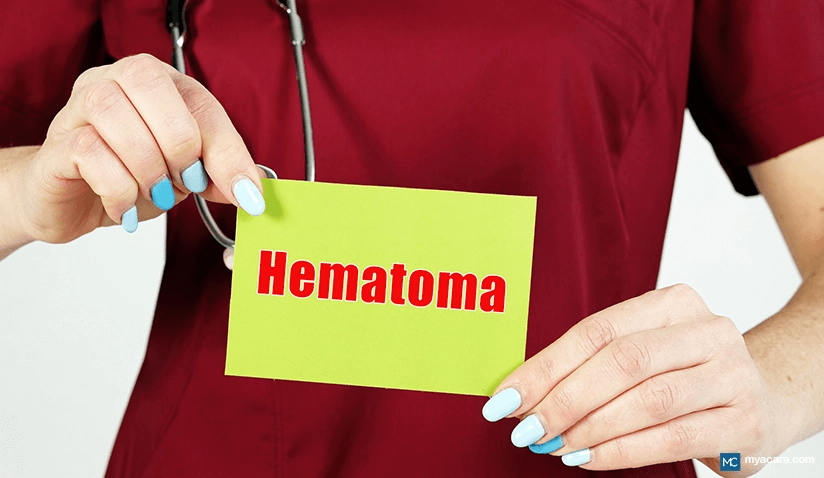The Pelvic Floor-Jaw Link: What the Research Shows

Medically Reviewed by Dr. Sony Sherpa, (MBBS)
Hip Issues Linked to Jaw Problems
Jaw Problems Leading to Hip Issues
The human body is a marvel of interconnected systems where seemingly unrelated parts can profoundly impact one another. One emerging area of interest among physiotherapists, dentists, chiropractors, and bodywork specialists is the relationship between the jaw and the hips - particularly the pelvic floor. What once seemed like isolated regions are now being studied as deeply linked through anatomy, neurology, and biomechanics.
This blog explores the often-overlooked connection between the hips and the jaw, highlighting how dysfunction in one area can contribute to problems in the other. Understanding this link can help patients and clinicians develop better, more holistic treatment strategies for persistent issues.
Anatomy of the Connection: How Are They Linked?
Embryological Connection
The intricate relationship between the jaw and pelvic floor begins before birth. During embryonic development, both the structures of the jaw and the pelvis originate from shared cellular building blocks. Specifically, the jaw forms from the first pharyngeal arch, while the pelvis arises from mesodermal tissue. Both structures are also heavily influenced by neural crest cells, a special population of cells that migrate throughout the developing embryo to help form craniofacial structures, parts of the nervous system, and even connective tissue in the body.
This common embryological origin lays a developmental foundation that explains why dysfunction in one area can sometimes show up as problems in the other. For example, both regions share developmental pathways for muscle formation, nerve supply, and even vascular structures. This developmental "blueprint" for interconnectedness persists through adulthood, creating anatomical and functional links that are often overlooked in conventional medical approaches.
Fascial Lines
Beyond embryology, one of the clearest anatomical explanations for the jaw-hip connection lies in the body’s fascial network. Fascia is a web-like, fibrous connective tissue that surrounds and interpenetrates every muscle, bone, organ, and nerve in the body. It acts like an internal scaffolding system, holding everything together while allowing smooth movement and force transmission across distant parts of the body.
According to the "Anatomy Trains" theory by Thomas Myers, the body is organized into several fascial lines or myofascial meridians that connect different muscle groups from head to toe. For the jaw and pelvis, key fascial lines include:
- The Superficial Front Line: Extends from the top of the head, down the jaw and neck, through the chest and abdomen, and into the pelvis and legs.
- The Lateral Line: Runs along the sides of the body, connecting the jaw muscles to the hips and outer thighs.
- The Spiral Line: Wraps around the body in a helical pattern, linking movements of the head and jaw with rotations and stability in the pelvis.
When tension, injury, or dysfunction occurs in one part of these fascial lines, it can ripple through the entire chain. For instance, tightness in the hip flexors can pull on the fascia connected to the abdomen and chest, subtly altering head and jaw posture. Similarly, clenching the jaw repeatedly (as in bruxism) can send tension down the fascial network, leading to stiffness and instability in the hips and pelvis.
This fascial connection is why seemingly unrelated symptoms, such as jaw pain and hip stiffness, can often share a common cause.
Nervous System Integration
If the fascia provides the structural link between the jaw and pelvis, the nervous system offers a functional and dynamic connection. Two major nerves play starring roles in this relationship:
- The Trigeminal Nerve (Cranial Nerve V): The primary nerve supplying the muscles of mastication (chewing) and the sensation of the face and jaw. It is one of the most powerful nerves in the body and is deeply involved in regulating head and neck posture.
- The Vagus Nerve (Cranial Nerve X): Often called the "wandering nerve," it extends from the brainstem down through the neck, chest, and abdomen, innervating the heart, lungs, digestive tract, and crucially, the pelvic organs, which include the bladder and reproductive organs.
These two nerves communicate indirectly through shared pathways in the brainstem and spinal cord, allowing jaw tension to influence pelvic function and vice versa. For example, chronic jaw clenching can stimulate the sympathetic nervous system (the "fight or flight" system), leading to increased pelvic floor tension and digestive issues. Conversely, chronic pelvic pain can upregulate brainstem circuits that also affect jaw muscle tone and sensitivity.
Additionally, central nervous system patterning and proprioception - the body’s ability to sense its own position - require coordination between the jaw, head, spine, and pelvis to maintain balance and functional movement. Disruptions in this network, whether due to injury or chronic dysfunction, can lead to maladaptive postural and muscular patterns that persist until both regions are addressed.
Biomechanical Relationships and Posture
Posture is perhaps the most visible manifestation of the jaw-hip connection. The alignment of the pelvis serves as the body’s foundational "keystone," supporting the spine, which in turn balances the head and jaw. Any shift in pelvic position has a domino effect on spinal curvature and head posture:
- Anterior Pelvic Tilt (pelvis tilting forward) often increases lumbar lordosis (inward curve of the lower back), leading to compensatory extension in the thoracic spine and a forward head posture that strains the jaw muscles.
- Posterior Pelvic Tilt (pelvis tilting backward) flattens the lower back curve and forces the head and jaw to shift backward or downward to maintain balance.
Conversely, dysfunction in the jaw, such as a misaligned bite or TMJ disorder, can change head posture and neck muscle tone, creating compensatory patterns down through the spine and pelvis. People with chronic TMJ issues often develop asymmetrical hip function, sacroiliac joint pain, or even leg length discrepancies due to the body’s attempt to redistribute tension.
How Hip Issues Can Lead to Jaw Problems
Causes of Postural Changes
Chronic hip dysfunction often begins subtly, with small changes in posture that, over time, create significant misalignments throughout the body.
- Pelvic Tilt and Spinal Curvature: An anterior or posterior tilt of the pelvis shifts the spine’s natural curves, prompting compensatory changes in the head and jaw position.
- Leg Length Discrepancy: Whether structural or functional, a leg length difference can cause pelvic obliquity, scoliosis, and craniofacial asymmetry.
- Sacroiliac (SI) Joint Dysfunction: Instability in the SI joint often results in uneven weight distribution, affecting gait and posture up to the neck and jaw.
- Muscle Imbalances and Compensatory Patterns: Tight hip flexors, weak glutes, and overactive adductors can all create chain reactions impacting jaw musculature through altered head and neck posture.
How These Postural Changes Affect the Jaw
- Forward Head Posture: A common compensation for pelvic imbalances, forward head posture strains the neck and jaw muscles, contributing to tension in the jaw muscles and limiting the resting position of the temporomandibular joint (TMJ).
- Impact on Neck and Jaw Muscles: Chronic tightness in the sternocleidomastoid and trapezius muscles can irritate the jaw through fascial and neurological links.
- Propagation of Tension: Stress and mechanical tension travel along myofascial chains, affecting both hip and jaw structures, often presenting as persistent pain in seemingly unrelated areas.
How Jaw Problems Can Lead to Hip Issues
Temporomandibular Joint (TMJ) Dysfunction and Posture
TMJ dysfunction alters jaw alignment and muscle tone, prompting compensatory shifts in the neck, shoulders, and pelvis. Patients often develop a forward-leaning posture or scoliosis-like adaptations to accommodate jaw misalignments.
Bruxism (Teeth Grinding) and Postural Imbalances
Bruxism - the chronic grinding or clenching of teeth - increases muscular tension in the face, neck, and shoulders, altering head posture and potentially contributing to instability in the pelvis and hips.
Altered Breathing Patterns and Compensatory Changes
Jaw tension can impair breathing by restricting airway space. Compensations such as shallow chest breathing impact core stability, diaphragm function, and pelvic floor tone.
Neurological Pathways
The trigeminal nerve controls jaw movement, while the vagus nerve influences pelvic floor function. These two nerves are part of a complex feedback loop between the jaw and pelvis. Disruptions in trigeminal function can influence vagal tone, impacting digestive and pelvic health.
It has been proposed that altered proprioception and central nervous system patterning might play a role in maintaining muscular imbalances between the jaw and hips, suggesting that comprehensive treatment may require addressing both areas.
Symptoms That May Suggest a Hip-Jaw Link
Recognizing the signs of a hip-jaw connection can lead to earlier and more comprehensive treatments:
- Persistent jaw pain accompanied by hip stiffness or pain.
- Difficulty opening or moving the jaw, worsening after prolonged sitting or standing.
- TMJ clicking alongside an uneven gait or posture.
- Uneven wear on teeth paired with pelvic or spinal asymmetry.
- Chronic neck and shoulder tension combined with pelvic misalignment.
Post-Pregnancy Jaw Pain
Many women experience jaw pain during and after pregnancy. Hormonal fluctuations, postural changes due to shifting center of gravity, and stress contribute to increased bruxism and TMJ dysfunction.
Pregnancy also affects the pelvic floor, and postural adaptations during this time can tighten the jaw. Some researchers have noted overlapping pain patterns in patients with endometriosis and TMJ disorders, possibly due to shared inflammatory or neurological pathways, though this connection remains speculative.
Understanding this jaw-pelvis connection during pregnancy helps explain postpartum jaw pain, uneven tension in the hips, and new-onset TMJ symptoms after childbirth.
Addressing the Issues Related to Hip-Jaw Connection
Medical Treatments
- TMJ Therapy: Treatments such as bite realignment, dental splints, and jaw muscle massage can help correct mechanical imbalances.
- Holistic Assessment: Seeking evaluation from a multidisciplinary team, including physical therapists, osteopaths, and dentists specializing in TMJ, can uncover hidden links between hip and jaw dysfunctions.
Allied/Complementary Therapies
- Manual Therapy: Techniques such as myofascial release, massage, and joint mobilization can help relieve soft tissue tension along fascial lines, which may improve mobility between the hips and jaw.
- Stress Management: Stress exacerbates muscular tension, particularly in the jaw and pelvic floor. Practices such as yoga, meditation, and deep breathing may improve neuromuscular control and promote relaxation.
Exercise
- Posture Correction: Movements such as chin tucks, wall posture exercises, and pelvic tilts can serve to retrain spinal alignment, thereby helping to reset neuromuscular patterns between the jaw and pelvis.
- Muscle Balancing: Targeted stretching and strengthening programs for the hip flexors, glutes, deep neck flexors, and jaw muscles can restore functional harmony.
- Movement and Exercise: Regular, balanced movement patterns - including activities like Pilates and functional training - enhance the synergistic functioning of the hip and jaw structures.
How to Relax the Jaw and the Pelvic Floor
Practical exercises can help release tension simultaneously from both regions:
- Pigeon Pose: This yoga posture opens the hips and engages relaxation of the pelvic floor, indirectly benefiting jaw relaxation.
- Jaw Relaxation Exercise: Gently placing the tongue on the palate (the roof of the mouth, behind the teeth) and breathing deeply may promote a relaxed "resting position" for the jaw and pelvic floor.
- Diaphragmatic Breathing: Deep belly breathing aids in resetting the nervous system, potentially encouraging tension release across the myofascial chains.
- Myofascial Release Techniques: Using gentle pressure tools on tight jaw or hip muscles may provide significant tension relief.
Conclusion
The jaw and hips are intricately connected through embryological development, fascial lines, neural pathways, and biomechanical systems. Dysfunction in one area often propagates to the other, leading to chronic pain, poor posture, and tension in jaw muscles and pelvic structures.
Recognizing the hip-jaw connection opens new doors in diagnosis and treatment, emphasizing holistic strategies that address the body as a functional whole. Whether dealing with postpartum jaw pain, TMJ dysfunction, anterior pelvic tilt, or chronic hip stiffness, integrating therapies for both regions may lead to more sustainable outcomes.
Ultimately, improving awareness of the fascial line connection, nervous system pathways like the vagus and trigeminal nerves, and the impact of posture can empower patients and practitioners to create more effective, integrated treatment plans, potentially enhancing the overall quality of life by addressing issues from the base of the spine to the tip of the jaw.
To search for the best Healthcare Providers for Dentistry in Azerbaijan, Germany, India, Malaysia, Poland, Singapore, Spain, Thailand, Turkey, the UAE, the UK and the US, please use the Mya Care search engine.
The Mya Care Editorial Team comprises medical doctors and qualified professionals with a background in healthcare, dedicated to delivering trustworthy, evidence-based health content.
Our team draws on authoritative sources, including systematic reviews published in top-tier medical journals, the latest academic and professional books by renowned experts, and official guidelines from authoritative global health organizations. This rigorous process ensures every article reflects current medical standards and is regularly updated to include the latest healthcare insights.

Dr. Sony Sherpa completed her MBBS at Guangzhou Medical University, China. She is a resident doctor, researcher, and medical writer who believes in the importance of accessible, quality healthcare for everyone. Her work in the healthcare field is focused on improving the well-being of individuals and communities, ensuring they receive the necessary care and support for a healthy and fulfilling life.
References:
Featured Blogs



